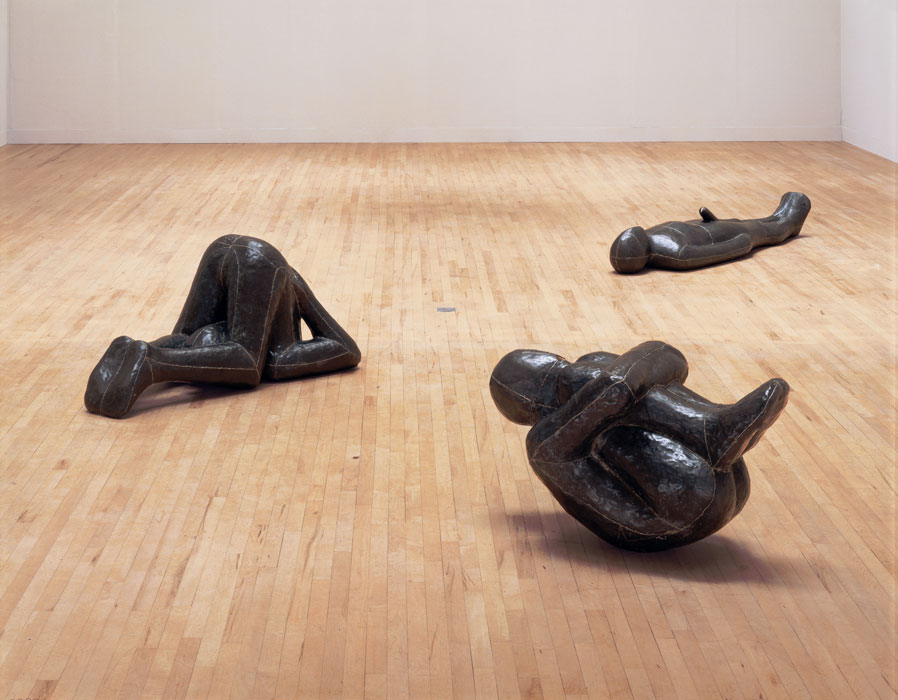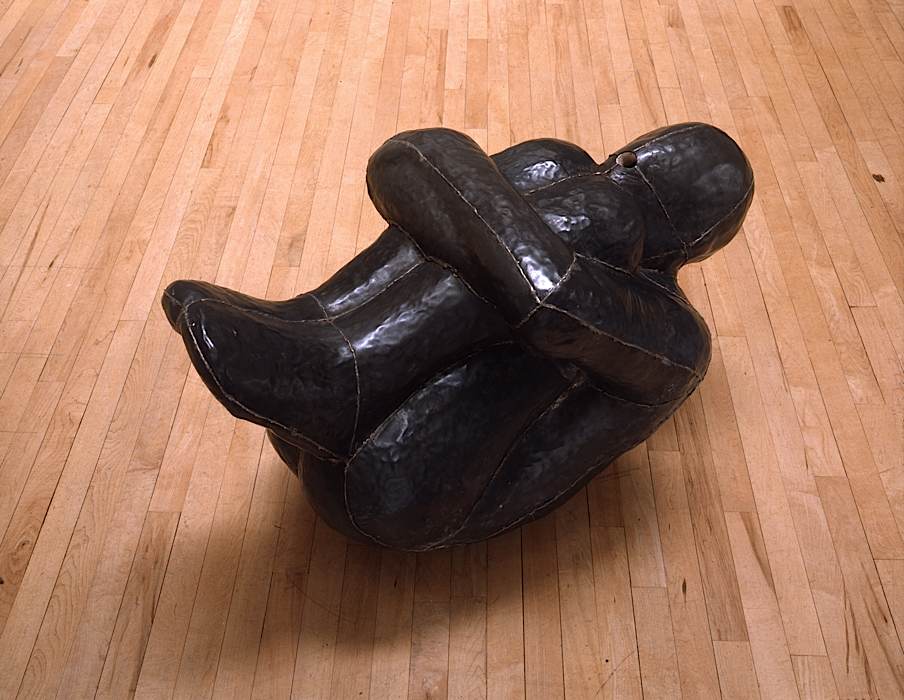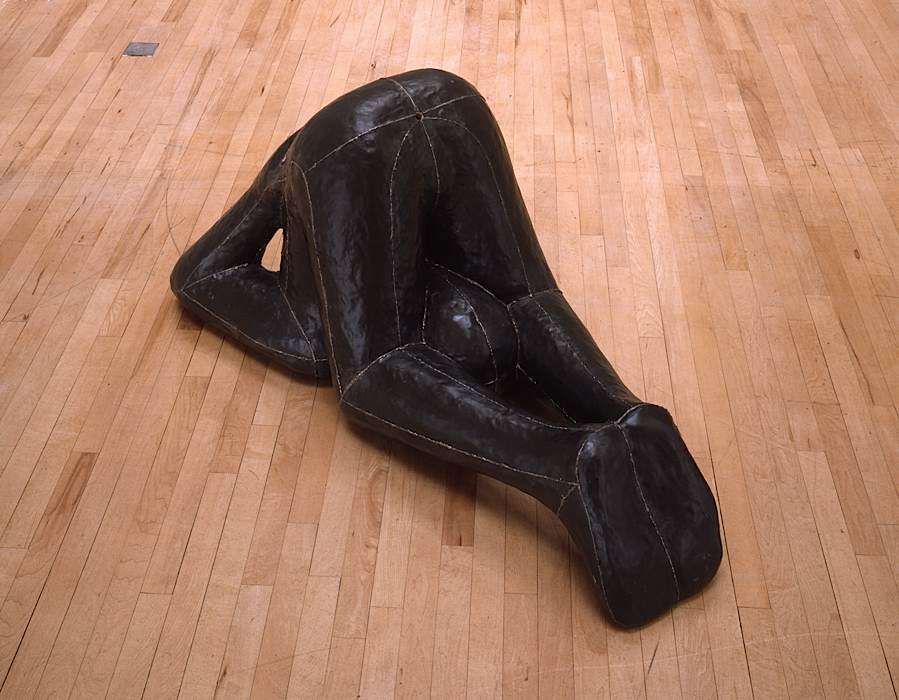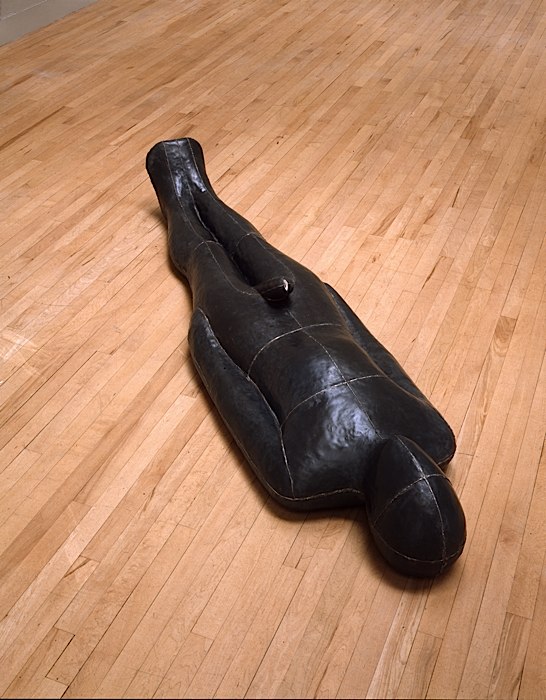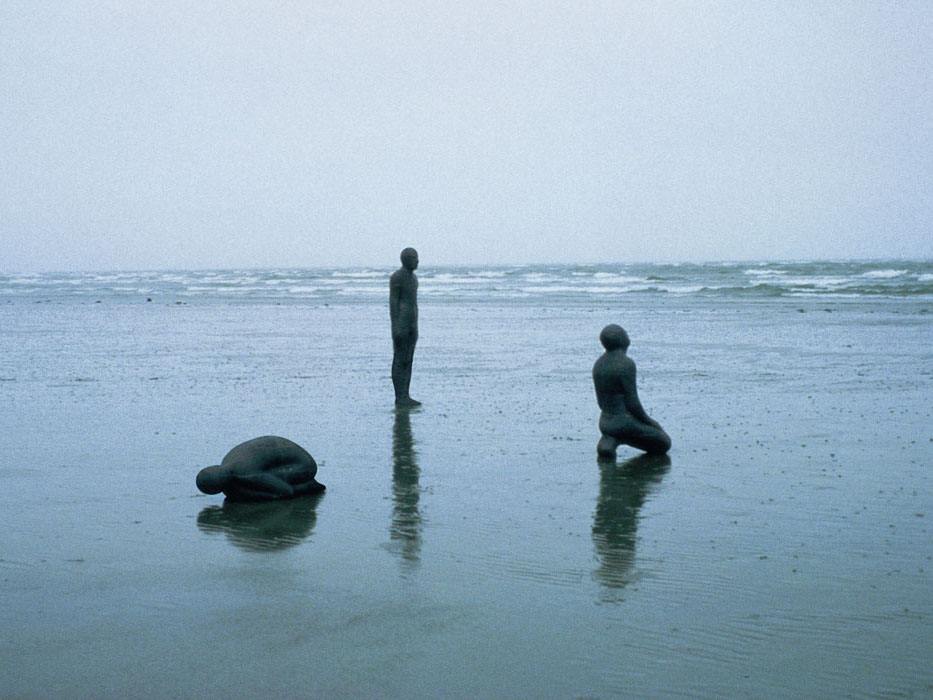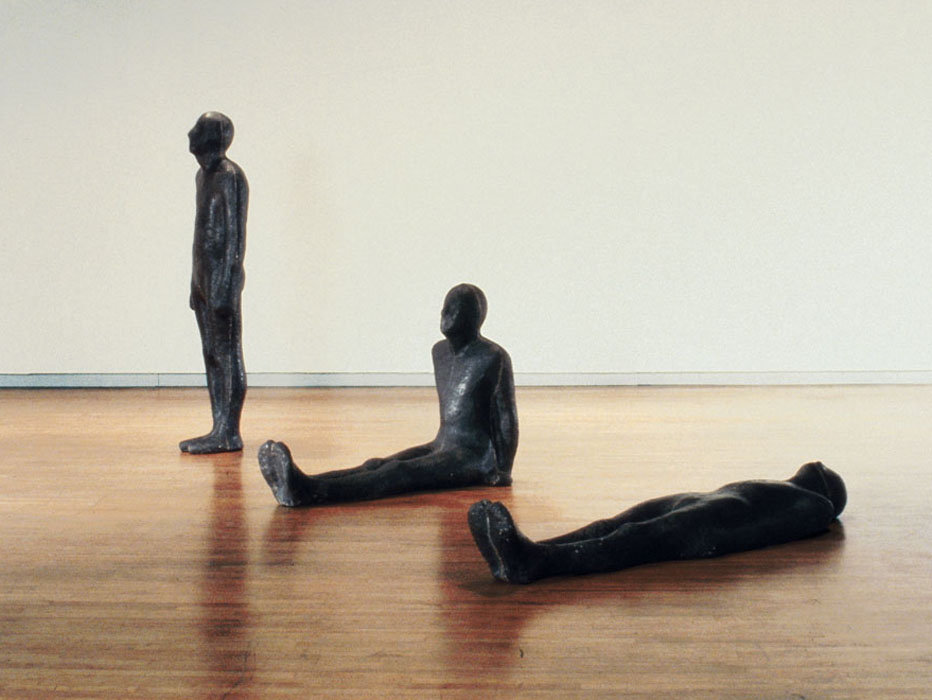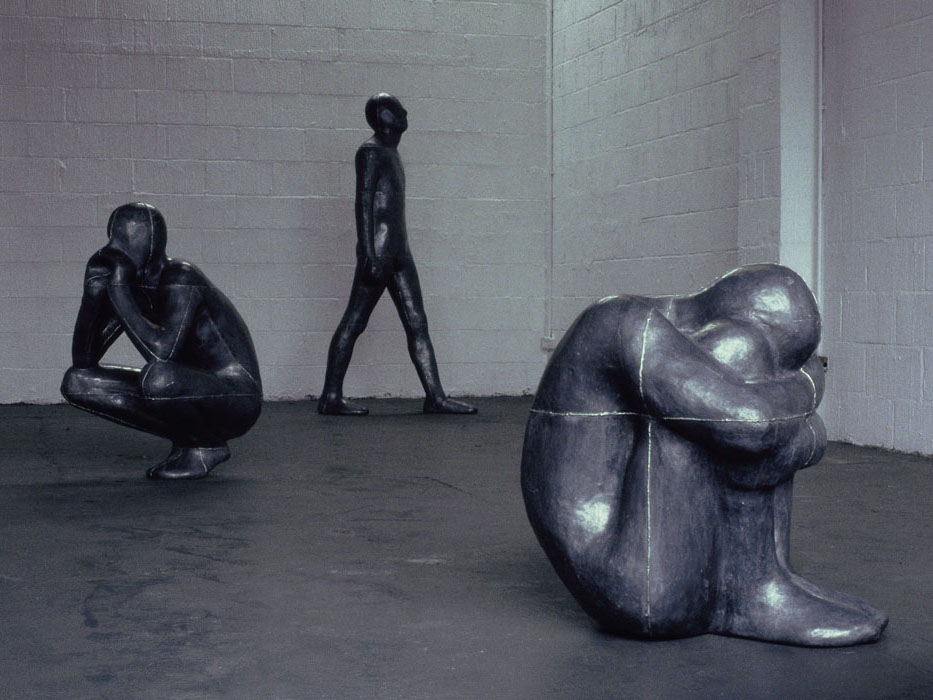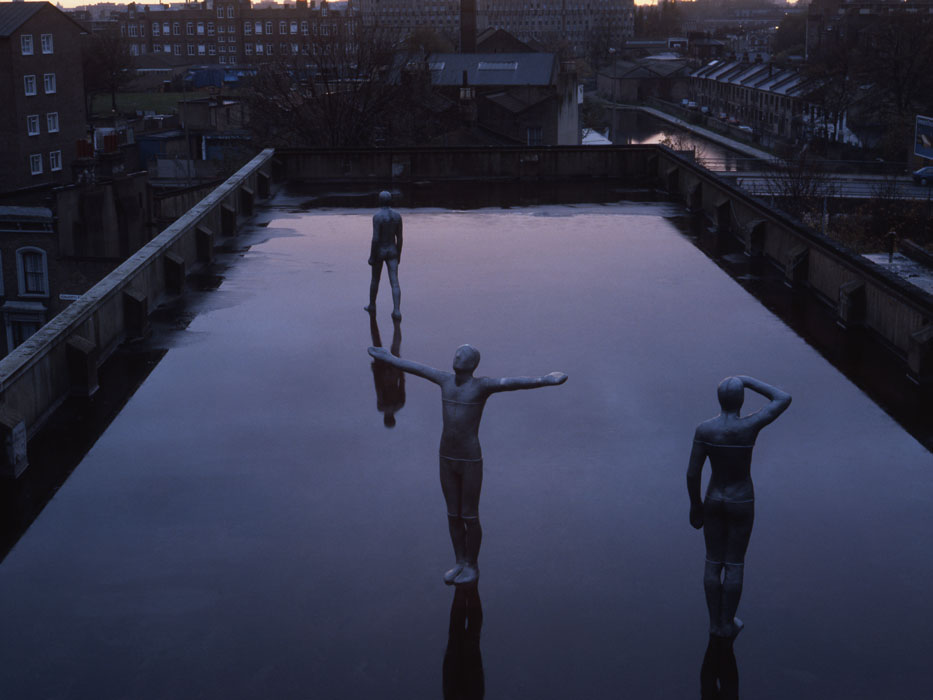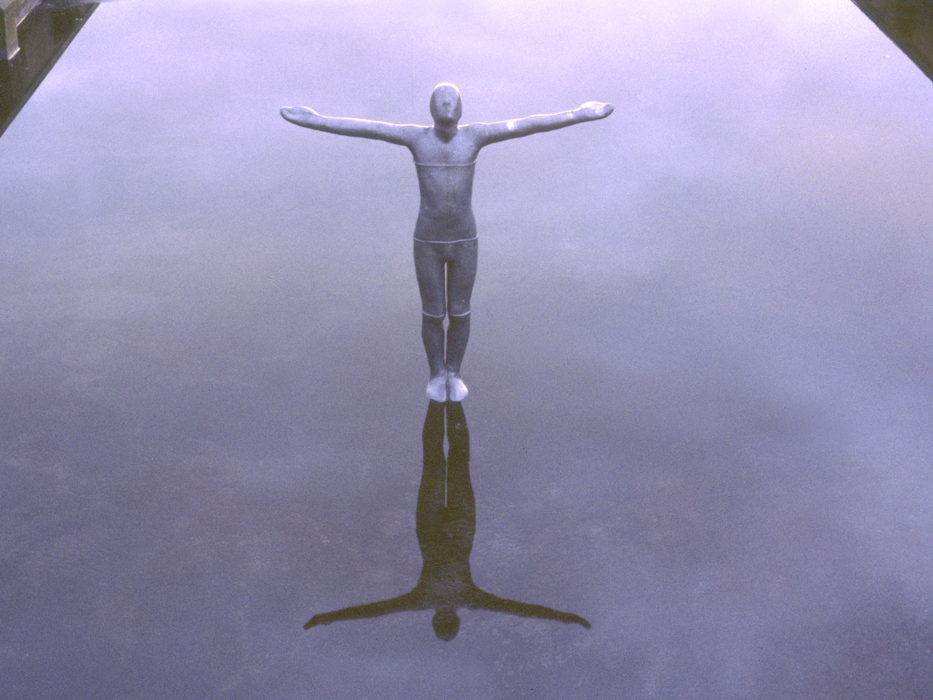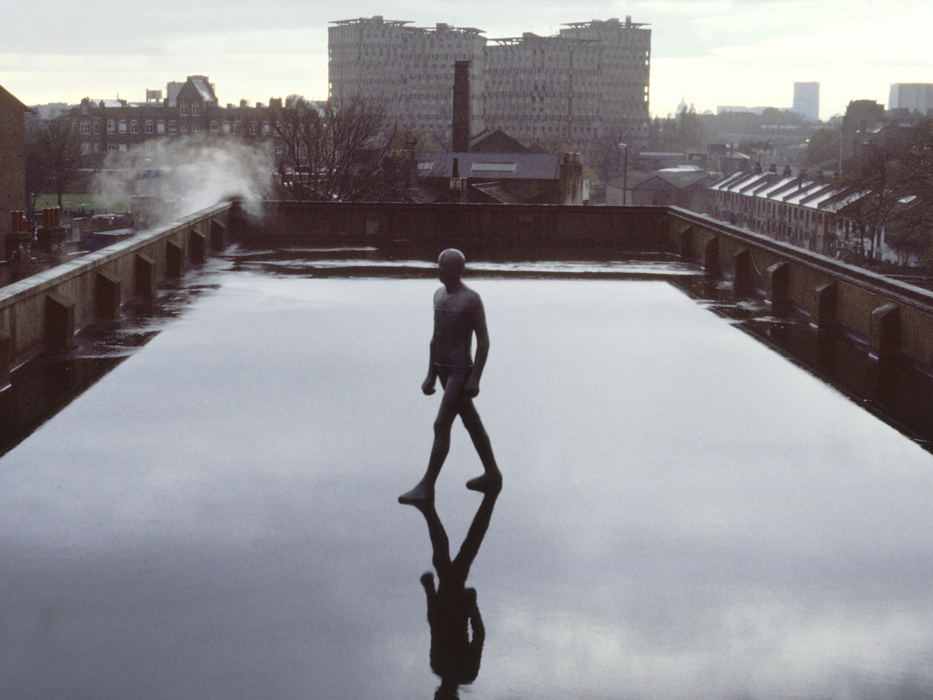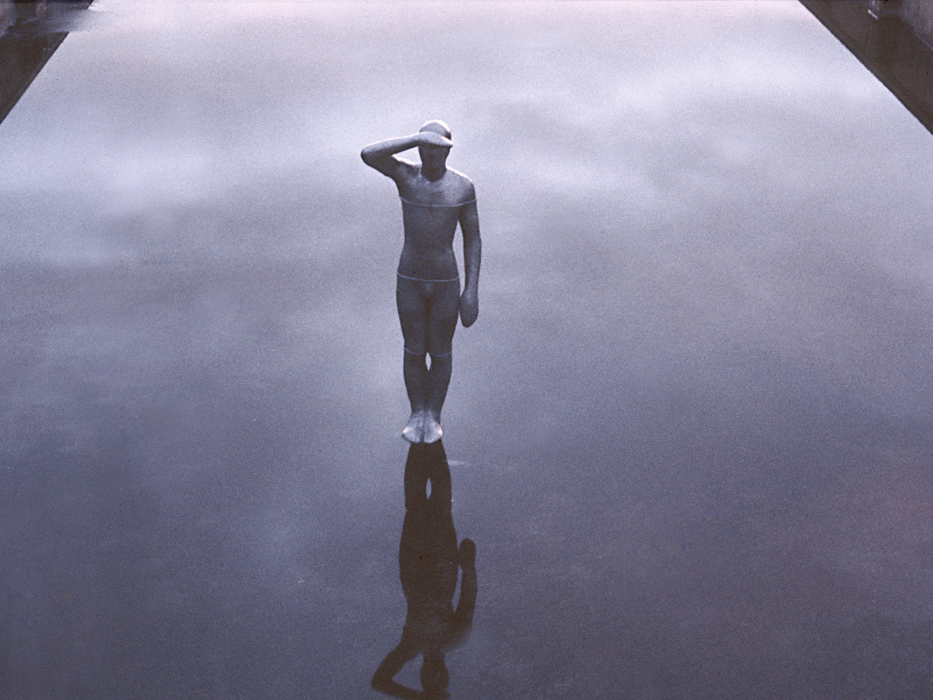How to make bodies into vessels that both contain and occupy space? The early three-piece lead works are the first works in which I used my own body. I was trying to map out the phenomenology of the body and to find a new way of evoking it as being less a thing, more a place; a site of transformation, and an axis of physical and spatial experience.
The crouching foetal form called MOULD that lies on its back in THREE WAYS, was the first bodycase, and was swiftly followed by HOLE and PASSAGE. This work identifies the three primary portals through which the male body relates to the wider world: the mouth, the anus and the penis. The works deal unequivocally with the darkness of the body, the space that we all inhabit when we close our eyes. The darkness at the interior is visible through the orifices in each work. All of these body case works relate to the body in the same way that a violin case relates to a violin: it follows the contours and evokes the presence of the object, but does not describe it. An indexical, precise print of the body is inside each one, so that these moulds could be used to make models, should mankind disappear from the face of the earth.
LAND, SEA AND AIR II followed: three body cases which attempted to associate a perception with a posture, and a posture with an element. For the first time, the lead carapace is divided by a vertical and horizontal grid, a system I used from this point onwards. LAND has its ear-holes open and listens to the ground, AIR kneels and listens to the sky with its nose holes open, and SEA faces out to the horizon with its eye holes open.
In THREE PLACES, the body cases completely enclose the internal form, making it hermetic. The pieces identify three basic body postures: lying, sitting and standing.
THREE CALLS tries to give sculptural form to the three levels of human activity: thought, speech and action.

